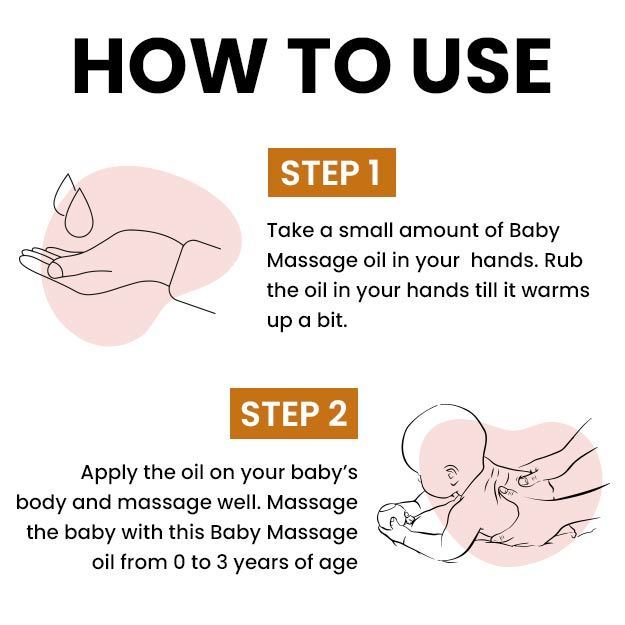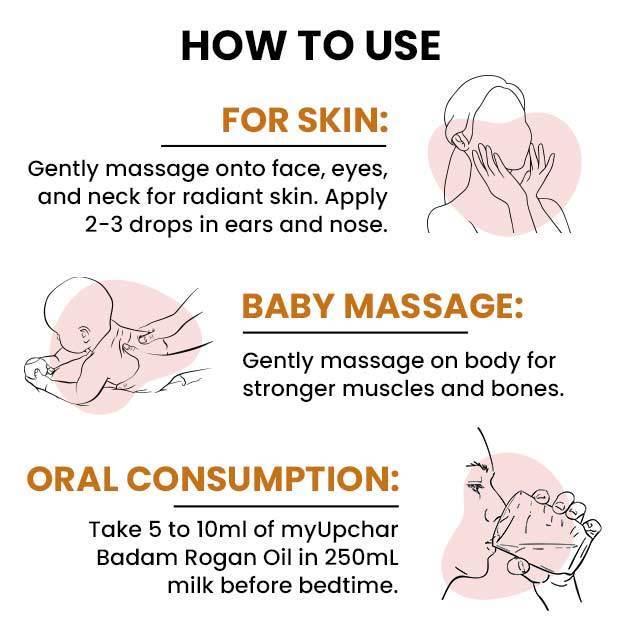Between feedings, sleepless nights and the joy of watching your newborn grow bigger and smarter every day, you have a lot to deal with as new parents. Not only do you have to get used to a new lifestyle altogether, but you’re also completely responsible for a whole new life. And while getting vaccinations for infants is important for their health, so is taking stock of their poop.
When it comes to figuring out the health status of your baby, what’s in the diaper matters a lot. Knowing what type of poop your baby is producing during the first few days, weeks and years of life can help you figure out what your baby’s body is going through, what it needs more of and what it needs to eliminate completely.
Most experienced mothers, nurses, nannies and doctors can tell your baby’s health status by the colour of the baby’s boop. A lot is determined by your baby’s feeding. A baby who is exclusively breastfed during the first six months - as recommended by the World Health Organization (WHO) - will have poops very different from those of babies who are formula-fed or partially breastfed.
Depending on the texture and smell of the poop, you can also tell if your baby’s digestive tract is working fine or not. If your baby’s digestive system is not working properly, there will also be enough warning signs in the poop. So, it’s very important to take note of your baby’s poop after birth, as it's an essential part of childcare. Here is everything you need to know about baby poop.
Read more: Benefits of breastfeeding
- Types of baby poop
- Baby poop colour
- Baby poop texture
- Frequency of baby poop
- Baby poop smell
- Warning signs of baby poop
- Tips to handle baby poop and diaper change
Types of baby poop
To understand what is normal and what is not where baby poop is concerned, the first thing you need to know are the types of poop. These depend on the way your baby is fed. The following are the main types of baby poop you should look out for:
- Meconium poop: Your newborn's fist poop should come within 48 hours after birth. This poop will be greenish-black, sticky and tar-like in appearance. This poop is called meconium and is made of the amniotic fluid, skin cells, mucus and other things that the baby ingested while in the womb.
- Transitional poop: This type of poop appears after the meconium and continues until the baby starts feeding properly. This poop is usually dark green or brown in colour, is sticky, but gradually getting softer. Transitional poop usually appears between the second and fourth or fifth day after birth.
- Breastfed poop: Babies who are exclusively breastfed have softer poop, which is mustard yellow, slightly greenish or brown in colour. This poop is usually pasty in texture and does not smell foul. Breastfed babies usually poop at least thrice a day, though the frequency can differ. This type of poop appears within five days after birth, and indicates that the baby is feeding properly.
- Formula-fed poop: If a baby is partially or fully formula-fed, the stool will be yellow or brown in colour and have a thick and pasty texture (like toothpaste). Formula-fed babies poop less often than breastfed babies. The poop of formula-fed babies also tends to be bigger in size and more odorous (smelly). Formula-fed poop usually appears within the first two weeks after birth.
- Solid food poop: This type of poop starts soon after the baby is introduced to solid foods, ideally when the baby is six months old. Solid food poop is usually dark brown or brown-yellow in colour. This poop can be thick and firm as well as soft and mushy, and might also reveal chunks of undigested food - all depending on what the baby is being fed. Solid food poop is usually very smelly.
Baby poop can also change temporarily when they start teething - the first tooth usually appears at six months or older, though the process and some of the symptoms can start earlier. This is normal. But if you are concerned about the amount or liquidy consistency of the poop, you should consult your paediatrician immediately.
Baby poop colour
Many parents get worried after observing the changing colours of baby poop, especially since you might believe that only brown or mustard yellow poop is normal. It’s important to remember that babies have a very small stomach, especially during the first few months, and are usually consuming only breast milk for the first six months. The following are some of the colours you might observe in your baby’s poop.
- Black poop: The meconium poop of your baby will be blackish in colour, and should subside within a week at most. If it doesn’t, do contact the doctor immediately. If your baby’s poop has black bits or speckles after the meconium stage, this could mean that he or she has ingested blood while suckling on the mother’s cracked and bleeding nipples. Treat the mother’s breasts, and the black poop should stop.
- Mustard yellow poop: This is what a normal poop in breastfed babies should look like. You might observe this colour soon after the meconium stops, and your baby’s poop will continue to be this colour until he or she starts on solid foods.
- Bright yellow poop: This colour of poop is normal for formula-fed babies. But if your baby is breastfed, has bright yellow poop which is also runny and very frequent, it can be a sign of diarrhoea.
- Orange poop: This colour may be seen in the faeces of babies who are either breastfed or formula-fed, and is considered to be a result of pigments in the baby’s digestive tract. No need to worry about this colour, unless the texture is runny and the poop is too frequent.
- Red poop: This colour usually indicates that your baby has consumed red juice, like carrot, pomegranate, tomato, etc. If not, this colour of poop can be a cause of concern. It could indicate blood in the stool due to an intestinal infection, milk allergies or anal fissure. Contact your paediatrician if you see this colour.
Note that WHO and UNICEF recommend that babies should not be given anything except breast milk until six months of age - this includes fruit and vegetable juices. - Greenish-brown poop: Formula-fed babies may have this colour of poop. If your baby is breastfed and has this colour after the meconium has passed, contact the paediatrician.
- Dark green poop: This colour indicates that your baby has eaten something green, most likely spinach or peas, after starting on solid food. If your baby has been given an iron supplement then the poop might also be yellow.
- White or grey poop: Your baby’s poop might be white or grey in colour if his or her liver isn’t producing enough bile to digest the food properly. This is a serious problem, and if your baby’s poop is either of these two colours, you should contact the paediatrician immediately.
Baby poop texture
The texture of your baby’s poop should settle soon after the first poop or meconium has passed. The following are some things about your baby’s stool texture that you should take note of:
- A baby’s stool should be soft and slightly mushy so that it’s easy to pass without much straining.
- A breastfed baby will have softer stool, while a formula-fed baby will have a slightly thicker-yet-soft stool.
- Breastfed babies might have seedy poop because the undigested milk fats can transform into little seeds in the poop.
- Extremely loose poops are indicative of the fact that your baby is not digesting food properly. Apart from diarrhoea, loose stools can indicate intestinal infections and can cause dehydration.
- Very hard stool indicates constipation. This can be caused by indigestion, a medical problem, or because of the formula you’re feeding the baby.
Frequency of baby poop
How often your baby poops will depend largely on how he or she is being fed. A baby who is being breastfed will have at least three bowel movements in a day, and can have up to eight poops in a day too. On average, a breastfed baby poops four times a day. Formula-fed babies poop less often. If you switch from breastfeeding to formula feeding or vice versa, you might observe some changes in the frequency of poops. Once you introduce solid foods to your baby, there might be some changes in the frequency too.
If and when you decide to (or need to) stop breastfeeding, consider dropping one feed at a time so that your baby's digestive system can get used to the alternative - whether it is formula milk or solid foods.
Baby poop smell
You might assume that a baby’s poop would smell quite bad and this would make diaper changes more harrowing. Actually, a newborn’s poop is odourless because his or her intestinal tract doesn't yet have the gut bacteria that grown-ups have. With time, as the healthy gut bacteria colonize the baby’s stomach and intestines, the poop will become smellier.
A breastfed baby’s poop will definitely smell less than that of a formula-fed baby, but this is quite normal. If your baby’s poop smells too foul, this might indicate an infection of some sort and you should get in touch with the paediatrician immediately. But the general rule of thumb you need to remember is that all poop stinks, and there’s not much you can do about it.
Warning signs of baby poop
If you see any of the following signs in your baby’s poop, you should get in touch with the paediatrician immediately:
- Runny poop: This might indicate diarrhoea, which in turn can be caused by an infection. It can also lead to dehydration.
- Hard faeces: This might indicate that your baby has constipation. If your baby is straining to poop or crying, it can also indicate colic.
- Red poop: If your baby has not consumed any red food and yet the poop is red or speckled with red, it can indicate milk protein allergy or rectal bleeding.
- Mucus in stools: If your baby’s poop has slimy, greenish streaks, this indicates your baby is either drooling or has an infection.
- White poop: This indicates that your baby’s liver is not producing enough bile and cannot digest the food properly.
- Frothy poop: If your baby’s poop is frothy or foamy or has bubbles in it, he or she is not getting enough hindmilk during breastfeeding. The foremilk is what comes out at the beginning of a feed, and it’s low in calories. The hindmilk comes out last and is more filling and nutritious.
- Foul poop: If your breastfed baby’s poop smells extremely foul before the introduction of solid foods, it could indicate an infection.
- Seeping poop: If your baby’s poop is too runny and seeps out of the diaper, it can indicate allergies, intestinal infection, diarrhoea and even rotavirus infection.
Tips to handle baby poop and diaper change
There will be variations of colour, texture and type of poop as your baby grows up. New, first-time parents are more likely to worry about their baby’s poop, and this is quite natural. The following tips will make handling diapers and keeping a track of your baby’s poop easier.
- Always wash your hands thoroughly with soap and water before and after handling your baby’s dirty diapers.
- Choose a safe location for your baby’s diaper change: a flat surface with no risk of falling down, no sharp edges, with an oilcloth placed below the baby.
- If your gag reflex is activated quickly, wear a mask or keep fresh lemon slices handy.
- No baby enjoys a wet and dirty diaper, so change quickly. Maintain eye contact while changing, talk or sing to the baby to soothe him or her. This will stop the baby from squirming and make changing diapers quick and easy for you.
- Clean your baby thoroughly with a soft, wet cotton ball, cloth or wet wipes. Move front to back to ensure that the germs aren’t transferred to the baby’s genitals. (Read more: How to clean your baby's genitals)
- If you’re worried about your baby’s poop, click pictures of it and keep a poop diary to consult with the doctor when you visit her or him next. Some might call this extreme, but at least you won’t be overly worried.
- Dispose of the baby’s diapers properly. If you’re using cloth diapers, make sure they are washed thoroughly and dried outside in the sun. Sunlight is the best disinfectant there is.
Doctors for Baby Poop

Dr. Anil Pathak
Pediatrics
42 Years of Experience

Dr. Pritesh Mogal
Pediatrics
8 Years of Experience
Dr Shivraj Singh
Pediatrics
13 Years of Experience

Dr. Varshil Shah
Pediatrics
7 Years of Experience
References
- UnityPoint Health [Internet]. West Des Moines. Iowa. United States; 12 Types of Baby Poop & What They Mean
- La Leche League [Internet]. North Carolina, United States; Baby’s Poop.
- Stanford Children's Health: Lucile Packard Children's Hospital [Internet], Stanford. USA; Meconium Aspiration
- Hertog, Jolanda den. et al. The Defecation Pattern of Healthy Term Infants Up to the Age of 3 Months. Arch Dis Child Fetal Neonatal Ed , 97 (6), F465-70. PMID: 22522220
- Lemoh, JN and Brooke, OG. Frequency and weight of normal stools in infancy.. Arch Dis Child. 1979 Sep; 54(9): 719–720. PMID: 518114
- Camurdan, Aysu Duyan. et al. Defecation Patterns of the Infants Mainly Breastfed From Birth Till the 12th Month: Prospective Cohort Study. Turk J Gastroenterol , 25 Suppl 1, 1-5. PMID: 25910285
- Courdent, Marie. et al. Infrequent Stools in Exclusively Breastfed Infants. Breastfeed Med , 9 (9), 442-5. PMID: 25243969
- Xinias, I and Mavroudi, A. Constipation in Childhood. An update on evaluation and management. Hippokratia. 2015 Jan-Mar; 19(1): 11–19. PMID: 26435640

























